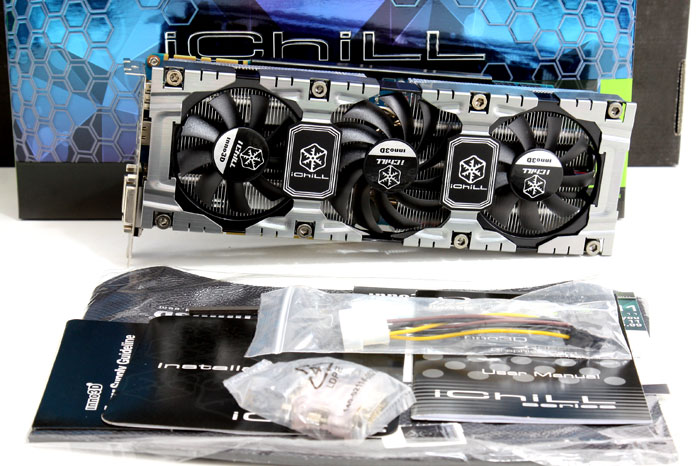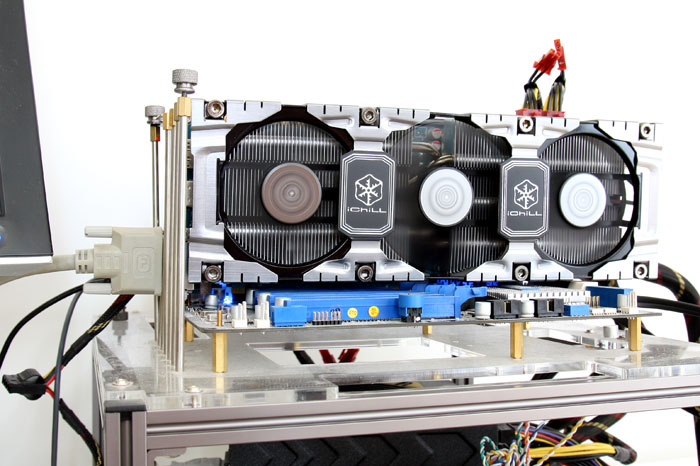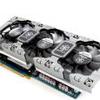Product Showcase Inno3D GeForce GTX 660 Ti iCHILL
Product Showcase GV-N66TOC-2GD
So Inno3D has an offering that you'll recognize, the product is completely custom, looks 'very much' like one of their GTX 670 SKUs, but most of all comes with iCHILL cooling. And if you use the verb 'chill' in a product, then you can rest assured that the cooling performance should be more than adequate.

Above packaging, below the product bundle. you'll notice that both the PCB and cooling are quite bit larger opposed to what you have seen. The cooling performance is just brutal though plus it is one of the most silent cards we have tested.

Alright, here we have the 3GB SKU (stock keeping unit) and its packaging, again that's 3 Gigabyte of graphics memory opposed to default 2 GB versions. Overall a nice dark looking card with a blue PCB. Let's look at the card from several different viewpoints.
Mind you that our Inno3D GTX 660 Ti iCHILL edition was rushed out to us and presumably is an early production model. it arrived with complete boxing and bundle though. You'll spot the card, a free mouse pad, 3DMark license, manual, case sticker, power cable, DVI to VGA dingle and an Allen key actually. The Allan key can be used to remove the cover, the fans can be pulled out and cleaned real easily that way. Handy ...

Inno3D clocks this iCHILL model card at a very decent 1020 MHz baseclock, a 1098 MHz Boost/Turbo clock and the memory is running at 6252 MHz. This factory tweak positions the card at the performance level of a GeForce GTX 670. Mind you that the reference baseclock is 915 MHz, so that's quite a factory clock that inno3D offer right there.

The cooler is just brilliant, the dual-slot design has three low RPM fans positioned directly above the aluminum fins which on their end are connected towards five heatpipes which connect to the copper GPU block. Multiple additional heatsinks and a plate are placed on components across the PCB to improve cooling.

